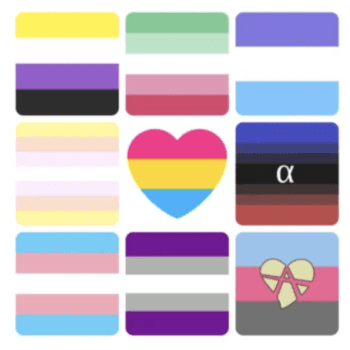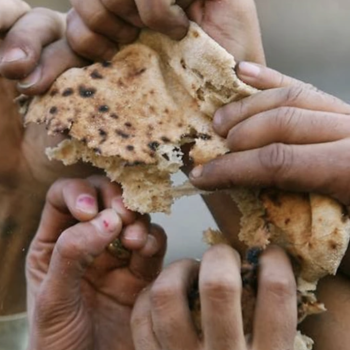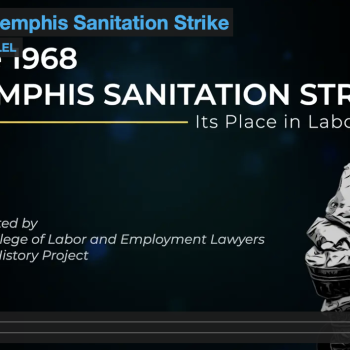Blessed are you, holy God. You are the creator of the waters of the earth. You are the fire of rebirth. You poured out your Spirit on your people Israel. You breathe life into our dry bones. Your Son Jesus promised to send the Spirit to us that the world may know your peace and truth.
Pour out your Holy Spirit, and breathe new life into those who are baptized. By your Spirit adopt us all as your children, through our Savior Jesus Christ, who lives and reigns with you and the Holy Spirit, one God, now and forever. Amen.
The Easter Vigil We Missed
A highlight of liturgical life in our congregation is the Easter Vigil. Each Easter weekend, we light the new fire, a bonfire on the church grounds, then light our candles from that fire and carry them into the sanctuary. We cry out, “This is the night!”
We sit quietly in the evening and hear readings from ancient books, long readings from Genesis, Exodus, Daniel, Isaiah, Ezekiel.
Then, just about at the breaking point, when we are filled with stories of God’s inbreaking but also exhausted and worn out with the sitting and listening, we host many baptisms. It is an electrifying moment.
Those who have prepared for baptism during the Lenten season come to the font, and we wash and welcome them into our community. Others, already baptized in previous congregations or places, are welcomed through a rite of affirmation of baptism.
All receive laying on of hands and anointing with oil, and prayer.
Afterward, we hang out and share treats around a chocolate fountain. Not because the tradition says we should, but simply because chocolate is yummy.
Except… we didn’t do any of this in 2020.
Easter this year was the beginning of this long season of “no church at church.” Everyone was scrambling and adapting. We created rituals for households to conduct at home, reading Scripture around the new fire.
We live-streamed Easter worship, and prepared the congregation to share the meal of Jesus in every place, in homes or apartments or workplaces, in conjunction with our online worship, or as their own worship in place.
But we didn’t baptize. Not because we believe only specific people can baptize (the pastor), or that baptisms have to take place at church (they don’t), but because baptism, being a one-time sacrament, has a specialness to it. We want it to be a special moment, so in conversation with those preparing for baptism, we decided to delay.
Well, it’s now been many weeks. We still don’t know for sure when we will gather for corporate worship in our church again. But the desire for baptism is still there, so we’re trying to plan a service that is joyous and celebratory, but also appropriately distant and safe.
In the rest of this post, I want to answer a few frequently asked questions about baptism in our tradition. I hope these brief responses can help anyone still considering baptism to entertain being baptized into Christ. I also hope this post can serve as a kind of catechism for our own folks (or the parents and sponsors of children) who want to learn more as they prepare.
Do children need to be baptized?
We get asked this one a lot, because many who come to our congregation come from Christian communities that practice believers baptism.
Essentially, believer baptism emphasizes baptism as an outward sign that the person being baptized has now come to faith themselves and wishes to enter more intentionally into Christian community and the life of Christ.
Certainly, we also baptize many older youth and adults for whom belief and baptism come together. We are not opposed to such baptisms, and we celebrate them.
We also believe, however, that baptism is primarily a gift. It’s God’s grace expressed outwardly and concretely in words and water. And since it is a gift, even infants can receive it. They do not need to believe (in the noetic sense) because instead it becomes a gift they can always look back to as an anchor in their lives.
Colossians 2:12: “For when you were baptized, you were buried with Christ, and in baptism you were also raised with Christ through your faith in the active power of God, who raised him from death.”
In our tradition, even faith itself is a gift of God, and baptism is one of those faith creating means of grace. Children do not need to be baptized, but if they are being raised in Christian community, it makes much sense for them to be baptized as part of their entrance into Christian community, and in our teaching and preaching we can then regularly point back to their baptism as something on which they can rely for peace and strength in Christ.
Do I need to be rebaptized?
No, we do not expect those coming into our faith community to be rebaptized. Said differently, we acknowledge and affirm your baptism into Christ, in the tradition from which you are coming.
There are a variety of teachings on this in Scripture, like Ephesians 4:5: “4 There is one body and one Spirit, just as you were called to one hope when you were called; 5 one Lord,one faith, one baptism; 6 one God and Father of all,who is over all and through all and in all.“
But we affirm previous baptisms for an additional reason, because we want to affirm and celebrate that God keeps God’s promises. If you have been baptized, that was God promising. We affirm that.
Pastorally, however, I will admit sometimes I meet with individuals who say, “I get it, you affirm previous baptisms, but the situation in which I was baptized was so terrible/abusive, it was such a bad memory, I truly desire to be baptized here in this place during the Easter Vigil.”
For those situations, we also trust that God is sympathetic and loving, and wishes people to be able to look to their baptism as truly a source of faith and life, and we do baptize again in those instances, trusting if God can be faithful once, God can also be faithful a second (or third, or fourth) time. 🙂
How Are We Going To Do Socially Distanced Baptism?
Well, here’s the vision right now. May 31st is Pentecost Sunday. Typically this would be a festival day for us. But thus far we have announced to the congregation that we wouldn’t be gathering at church at least until late June.
We’d like to find a way to make baptisms be extra special but also safe. So what we’d like to do is host a Pentecost Baptism Extravaganza, where all we do that day in worship is baptize anyone who desires to be baptized.
We’ll live stream the service like previous Sundays, but the only people that will come to the building are those preparing for baptism and their families. Then, we’ll have the families spread out around the sanctuary, conduct the liturgy for baptism, and then when the baptizands are ready, they will come forward to the font with their family, be baptized and receive oil. Then I’ll wash my hands, and repeat for the next baptism.
I’m still thinking through the health and safety ramifications, so some additional thoughts include possibly having the family conduct the actual baptism at the font with the water, and the laying on of hands and signing with the oil, while the officiant keeps appropriate social distance and a mask. I’m not positive such a practice is absolutely necessary at this point, but right now am just thinking through the practice publicly.
One goal will be to keep the total service brief, since we know a big part of staying healthy right now is related to the amount of time you’re in the same space.
So, opening reading from a biblical passage seemingly designed precisely for baptism and social distancing:
Philip and the Ethiopian
26 Now an angel of the Lord said to Philip, “Go south to the road—the desert road—that goes down from Jerusalem to Gaza.” 27 So he started out, and on his way he met an Ethiopian[a] eunuch, an important official in charge of all the treasury of the Kandake (which means “queen of the Ethiopians”). This man had gone to Jerusalem to worship, 28 and on his way home was sitting in his chariot reading the Book of Isaiah the prophet. 29 The Spirit told Philip, “Go to that chariot and stay near it.”
30 Then Philip ran up to the chariot and heard the man reading Isaiah the prophet. “Do you understand what you are reading?” Philip asked.
31 “How can I,” he said, “unless someone explains it to me?” So he invited Philip to come up and sit with him.
32 This is the passage of Scripture the eunuch was reading:
“He was led like a sheep to the slaughter,
and as a lamb before its shearer is silent,
so he did not open his mouth.
33 In his humiliation he was deprived of justice.
Who can speak of his descendants?
For his life was taken from the earth.”[b]34 The eunuch asked Philip, “Tell me, please, who is the prophet talking about, himself or someone else?”35 Then Philip began with that very passage of Scripture and told him the good news about Jesus.
36 As they traveled along the road, they came to some water and the eunuch said, “Look, here is water. What can stand in the way of my being baptized?” [37] [c] 38 And he gave orders to stop the chariot. Then both Philip and the eunuch went down into the water and Philip baptized him. 39 When they came up out of the water, the Spirit of the Lord suddenly took Philip away, and the eunuch did not see him again, but went on his way rejoicing.40 Philip, however, appeared at Azotus and traveled about, preaching the gospel in all the towns until he reached Caesarea.
Then, we’ll pray the liturgy for baptisms. Then conduct the baptisms. Since we use a laptop to live stream the service we should be able to do some pretty fun close-ups. Even family members from far away, plus the congregation, will be able to attend and feel as if they are there.
Then a lot of air hugs and waves and well-wishes for the baptized life in Christ between all the families present. Then maybe a cookie exchange or some kind of treats everyone can grab from the narthex on their way home. Perhaps some in our congregation can arrange drive-by celebrations at the homes of those baptized. [I’m leaving some of the brainstorming to all y’all, let’s hear what you’ve got!]
Typically, the Easter Vigil moves from the baptisms directly into a communion liturgy, so we’ll distribute instructions for each household to share communion at home with their families, and e-mail those instructions (like we’ve been doing throughout the pandemic) out to families in the congregation as well.
It will be a brief and very different kind of Sunday morning for Pentecost, but a morning filled with the vision of water washing those newly coming into the life of Christ filling our eyes and hearts.
Final Thoughts On Baptism and the Holy Spirit
Praying for the gifts of the Holy Spirit is not a distinct and separate part of the baptismal rite. Together with the laying on of hands, this prayer is rather an acknowledgment and expression of the bestowing of the Holy Spirit through baptism in water with the word of God. In the early church, this con-firmation of the baptism was conducted by the bishop, who would travel from community to community for the laying on of hands. Even when divided in time, it was still considered one ritual action.[1]
The Holy Spirit’s special work is to point forward and backward at the same time. The Holy Spirit lives with us now and points us to Christ, giving us faith in him. It also draws us forward, into the mission of God. The welcome at the conclusion of the baptismal liturgy reminds us of these two functions of the Holy Spirit.
Notice that although the baptismal liturgy centers in the middle on the one being baptized, and the primary person speaking and acting is the baptizer, at the end the liturgy expands, first to give a speaking part to sponsors or representatives of the congregation, and then to the whole assembly. This is a very important moment in the life of the church, and in the life of the sponsors or godparents. First, by giving the one being baptized a lit candle and speaking, they begin the long process of having faith for and with each other in ways that nurture communal faith. Second, by welcoming the baptized, the congregation recognizes the baptized as, truly, a new member of the body of Christ, and therefore one already on the journey with them “bearing God’s creative and redeeming word to all the world.”[1]
What this means is that the conclusion of the baptismal liturgy is not actually an ending, but a beginning. It is a liturgy that ends by opening up, first into the larger context of congregational worship, and then into the even larger context of congregational mission to all the world.
Given that this year’s baptisms at Pentecost will be social distanced and live-streamed, the mediating format for the service will highlight the “mission to the whole world” to an even greater extent.
[1] See Living the Promises of Baptism, Liturgy Training Publications, or Martin Marty’s Baptism: A User’s Guide, Augsburg, 2008, for further ideas.
[1] For a more in-depth look at the origins of Christian initiation and baptism, see Maxwell Johnson’s The Rites of Christian Initiation: Their Evolution and Interpretation, Liturgical Press, 2007.
For an in-depth study tool on baptism, see Washed and Welcome.
—
A Simple Explanation of the Introduction to the Baptismal Liturgy
In baptism.. We name the holy sacrament we are engaging in
Our gracious heavenly Father… We name the kind of God who acts
Frees us from sin and death… We declare what this God does
By joining us … We point to the one who accomplishes this freedom for us
to the death and resurrection… We confess participation in His life
of our Lord Jesus Christ…. We name the Son of God who is our new life.
We are born children of a fallen humanity;… We confess our current bondage
By water and the Holy Spirit… We name the one who comes to free us
We are reborn children of God… We declare the new people we are through baptism
And made members of the church,… We name the community we join
The body of Christ… We remember this community is Christ’s body
Living with Christ… We are Christ’s body, but he also lives with us as brother
And in the communion of saints,… We remember the many others also baptized
We grow in… Baptism is once, remembered again and again, and more and more
Faith… It gives faith
Love… It shapes us in love
And obedience… It is a new obedience
to the will of God… And we end as we began, with God.












